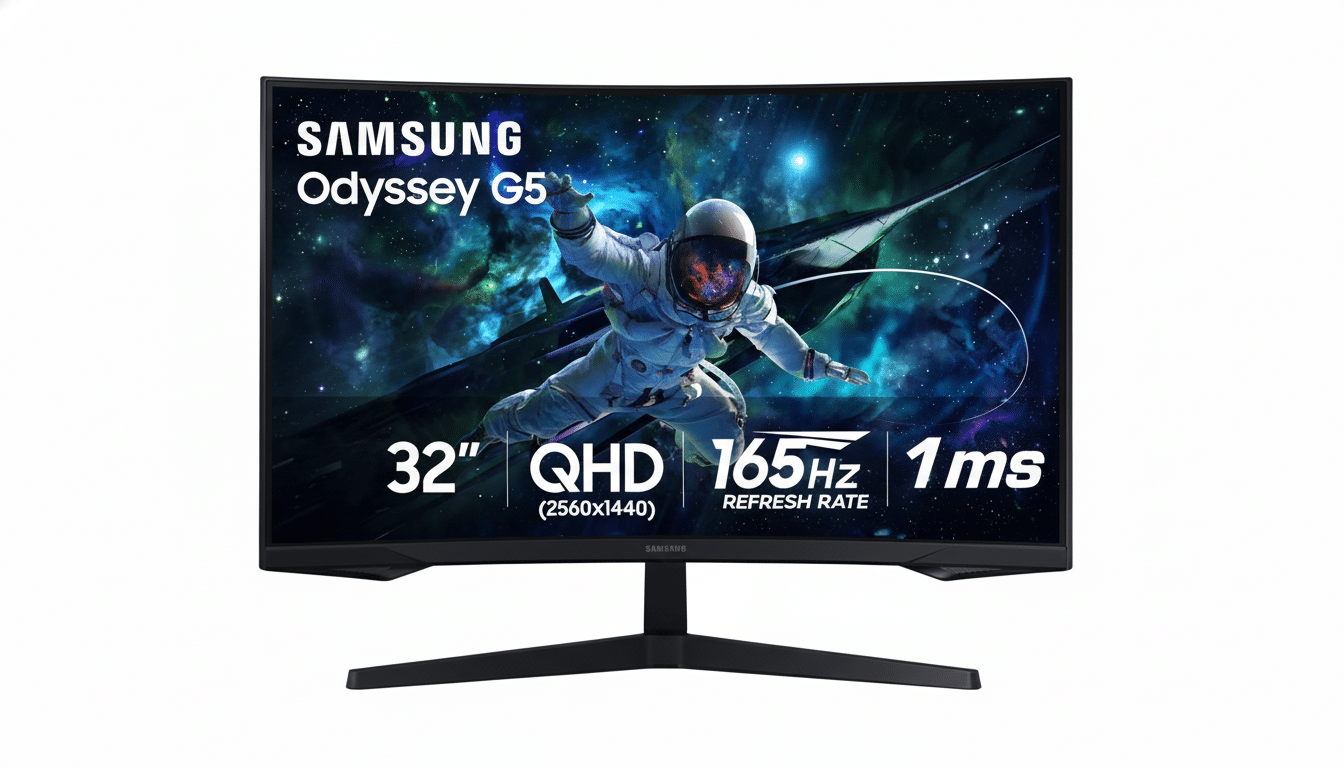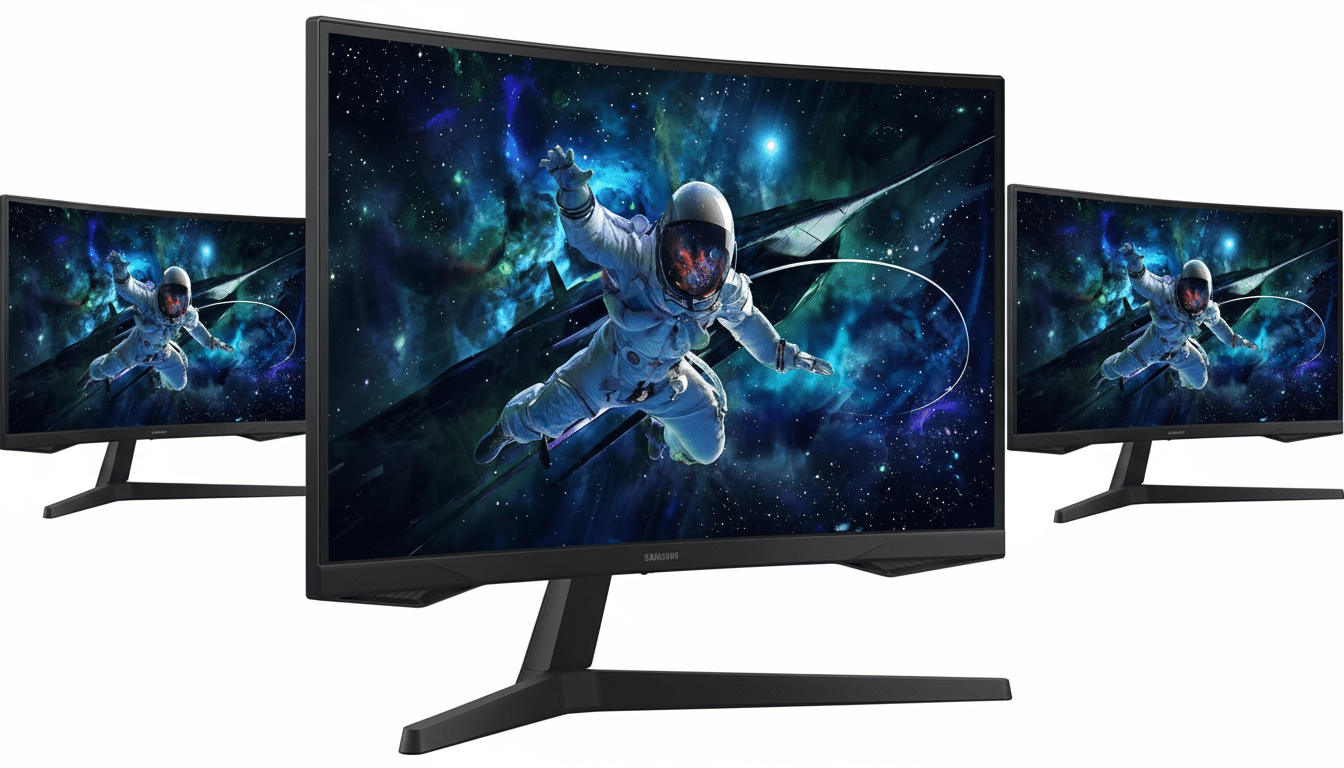A solid midrange gaming screen suddenly doesn’t have to cost an arm and a leg. The 27-inch Samsung Odyssey G55C curved monitor is on sale for 28% off at Walmart, $179 down from its usual $249 price. That’s an aggressive price for a 1440p panel with a 165Hz refresh rate, AMD FreeSync Premium, and a deep 1000R curve that’s designed to elevate both PC and console play.
But beyond the sticker shock, where you find the value is in the spec synergy: QHD (1440p) resolution for crispness, high refresh rates to smooth it all out—and a curve that enhances your immersion without demanding an ultra-wide desk.

The Steam Hardware Survey continues to reflect the steady march towards 1440p for PC gamers, and monitors like this are a big part of that—better visuals than 1080p, not as demanding on your GPU as 4K.
What Makes This 27-Inch Curved Panel Special
The 1000R curve closely simulates the human field of view, wrapping the frame around you and pulling the image into your peripheral vision. Certification bodies like TÜV Rheinland have made note of the ergonomic advantages that 1000R designs offer in terms of comfort, and in use it really does translate into less head movement and a consistent viewing distance across the screen—handy when you’re gaming for hours on end or spending the day typing up a storm.
At 27 inches, 2560 x 1440 resolution provides a sweet spot of pixel density that ensures text remains sharp and textures detailed. Couple it with a mainstream GPU—say a GeForce RTX 4060 or Radeon RX 7600—and you’ll be able to rock triple-digit frame rates in esports games while experiencing significantly cleaner visuals than 1080p.
Performance Specs That Are Important For Gamers
Locked and loaded: The 165Hz refresh rate, and a quoted 1ms response time, are aimed to produce blur-free motion in fast games such as Valorant, Apex Legends, or Rocket League. AMD FreeSync Premium incorporates low-framerate compensation, which maintains smooth performance even when frame rates drop below the monitor’s native refresh range (very handy in demanding games).
HDR10 support is onboard, but just like with most of these budget-friendly gaming monitors, consider HDR more as a bonus than an important aspect. The VA-type panel used in this range tends to provide strong native contrast—resulting in deeper blacks than many of its IPS-based rivals—which you can actively take advantage of when it comes to dark scenes even without top-end HDR brightness.

Connectivity is practical: two HDMI ports and one DisplayPort. For use as a PC monitor, DisplayPort is the easiest path to the full 165Hz at that resolution; recent updates allow modern consoles to output in 120Hz, and with recent firmware adding 1440p modes in PlayStation 5 and decent 120Hz support on Xbox Series X|S, this screen pulls double duty for console gaming either in your living room or the dorm.
How It Compares To Similar 27-Inch Options
Flat 27-inch IPS screens at 1440p frequently do not have quite the same high contrast but improve viewing angles and have slightly more agile gray-to-gray transitions. At 1000R, the G55C’s curve is more extreme than the 1500R or 1800R found on most competing screens but one that some gamers enjoy for its immersive qualities. Understandably, some spreadsheet jockeys prefer a flat panel, but for gaming and media curved really pays off.
Price-wise, $179 undercuts the more common range of around $200 to $300 we find on 27-inch, 165Hz, 1440p models at major retailers. Market observers including IDC have commented on the continuing vigor of interest in high-refresh QHD displays, though discounts this steep remain seasonal, making it an opportune moment to step up if you’ve been holding out for something beyond 1080p.
Who Should Buy It and What to Know Before You Go
If you find yourself oscillating between competitive shooters and cinematic solo single-player games, this is a kind of best of both worlds for speed vs image quality.
Console owners looking to upgrade from a basic TV to a 120Hz-capable display as well will appreciate the fluidity and contrast on offer. Content creators who require wide-gamut color or professional-grade HDR, however, will have to set their sights higher up the stack.
Small housekeeping notes: With budget gaming monitors you usually get tilt-only stands and little in the way of cable extras, so think about ergonomics and connectivity ahead. When playing on PC, use DisplayPort to ensure 165Hz; for consoles, turn on 120Hz in system settings and the game’s performance mode. At this price, a curved QHD panel with 165Hz is a solid long-term play—fast enough for today’s titles and sharp enough to be upgraded-beautiful.

